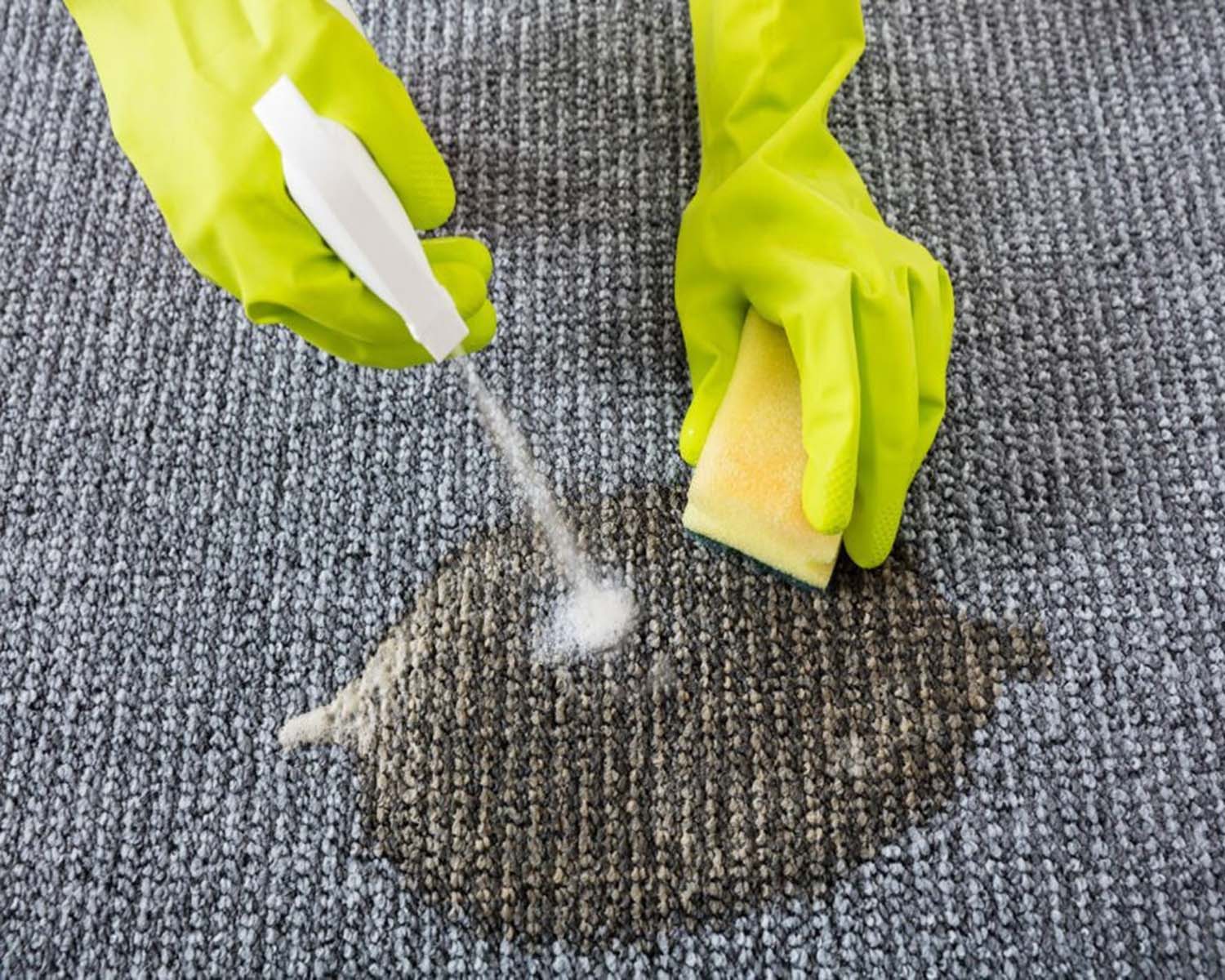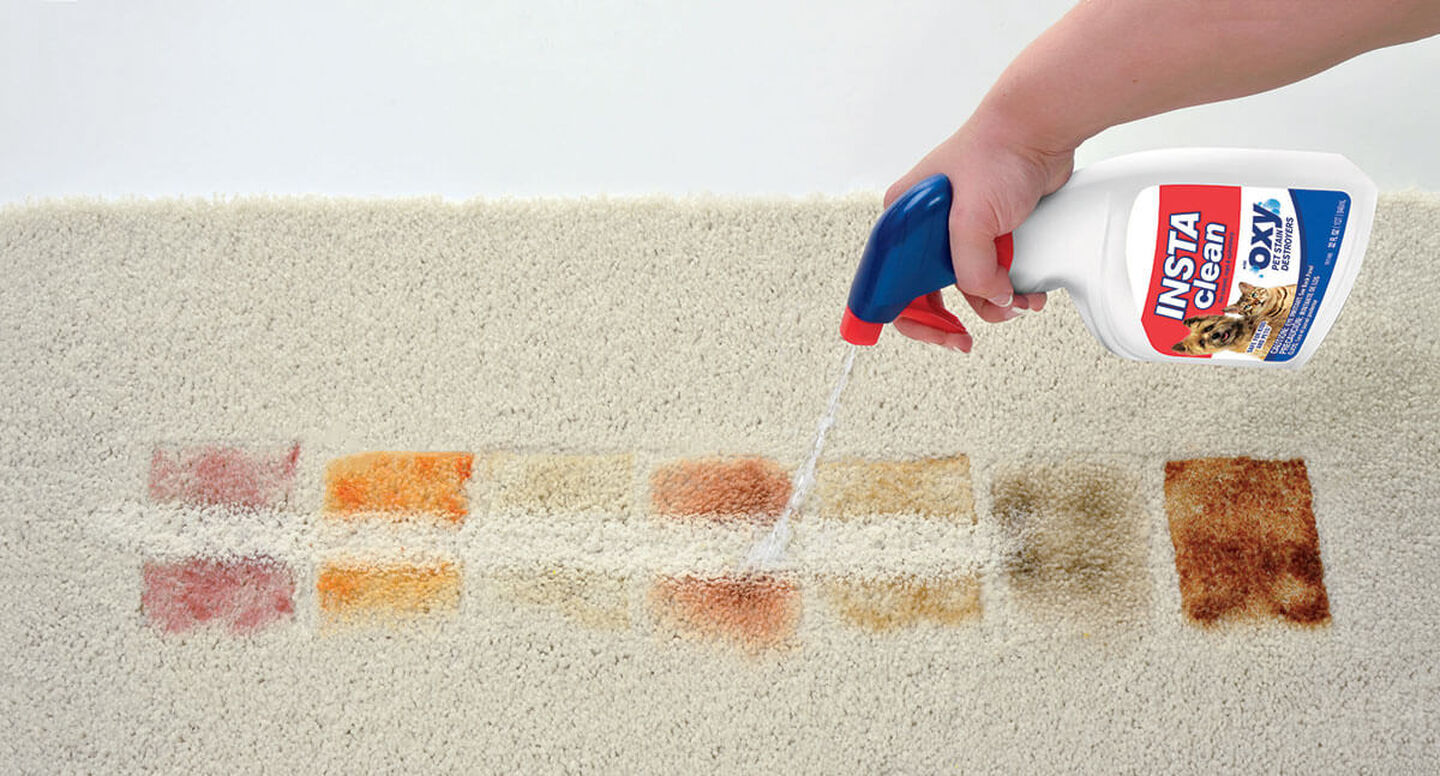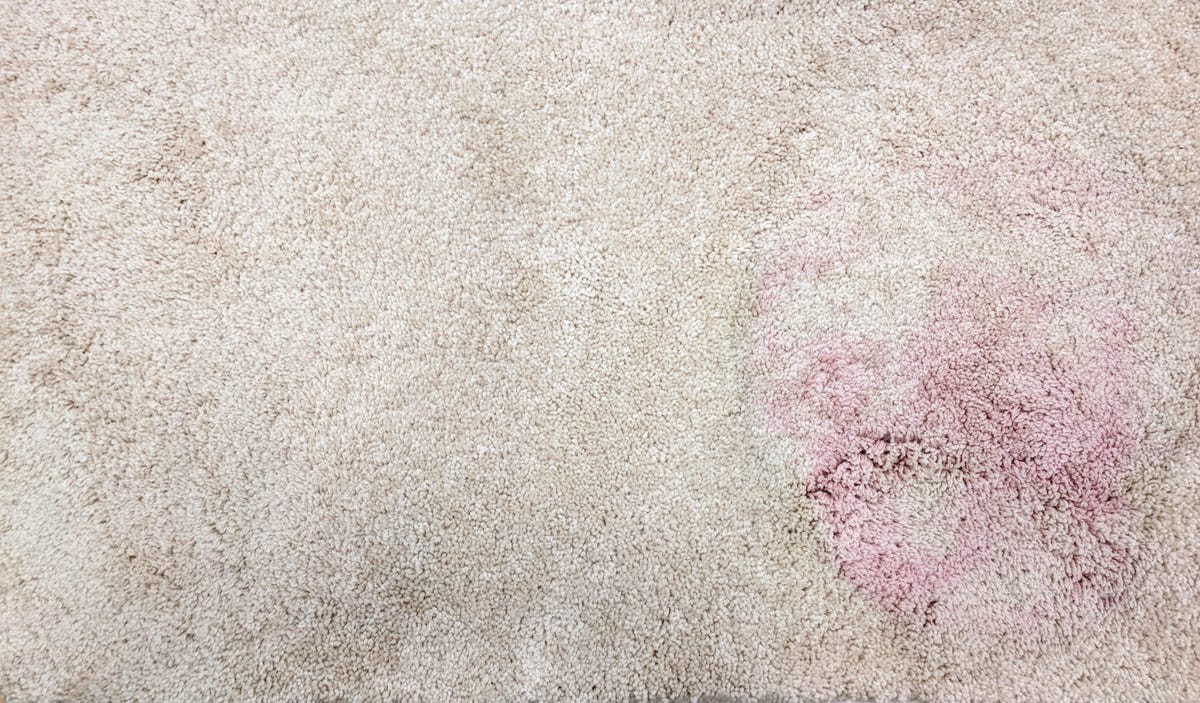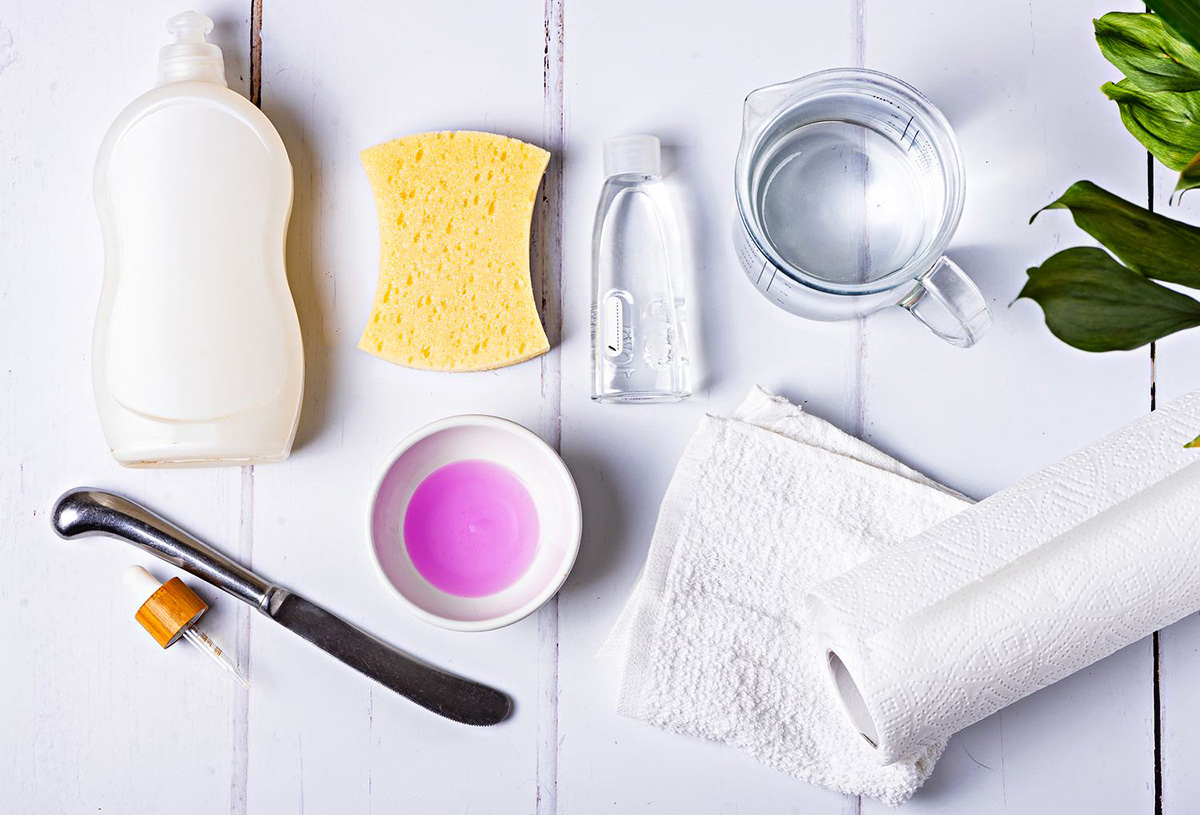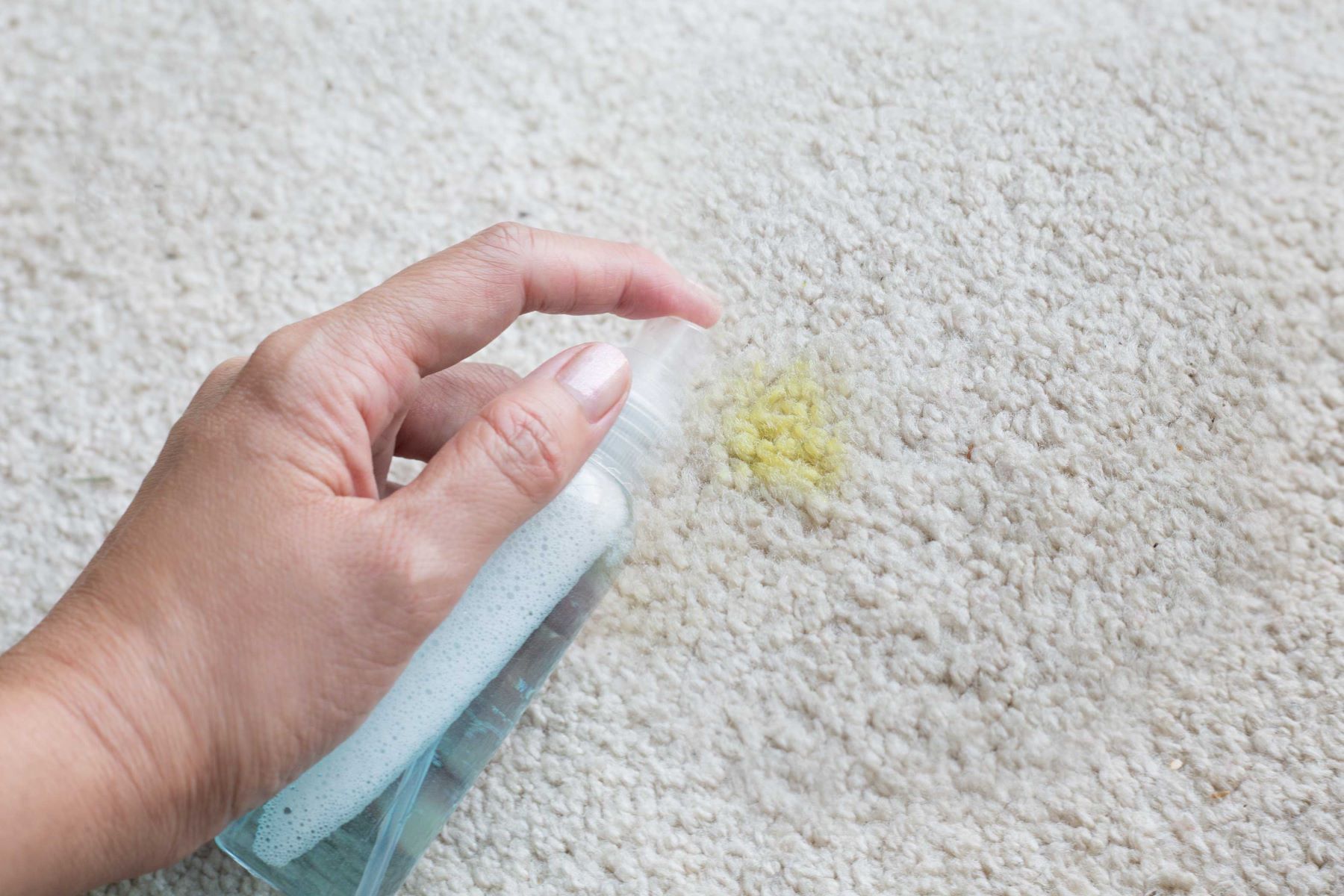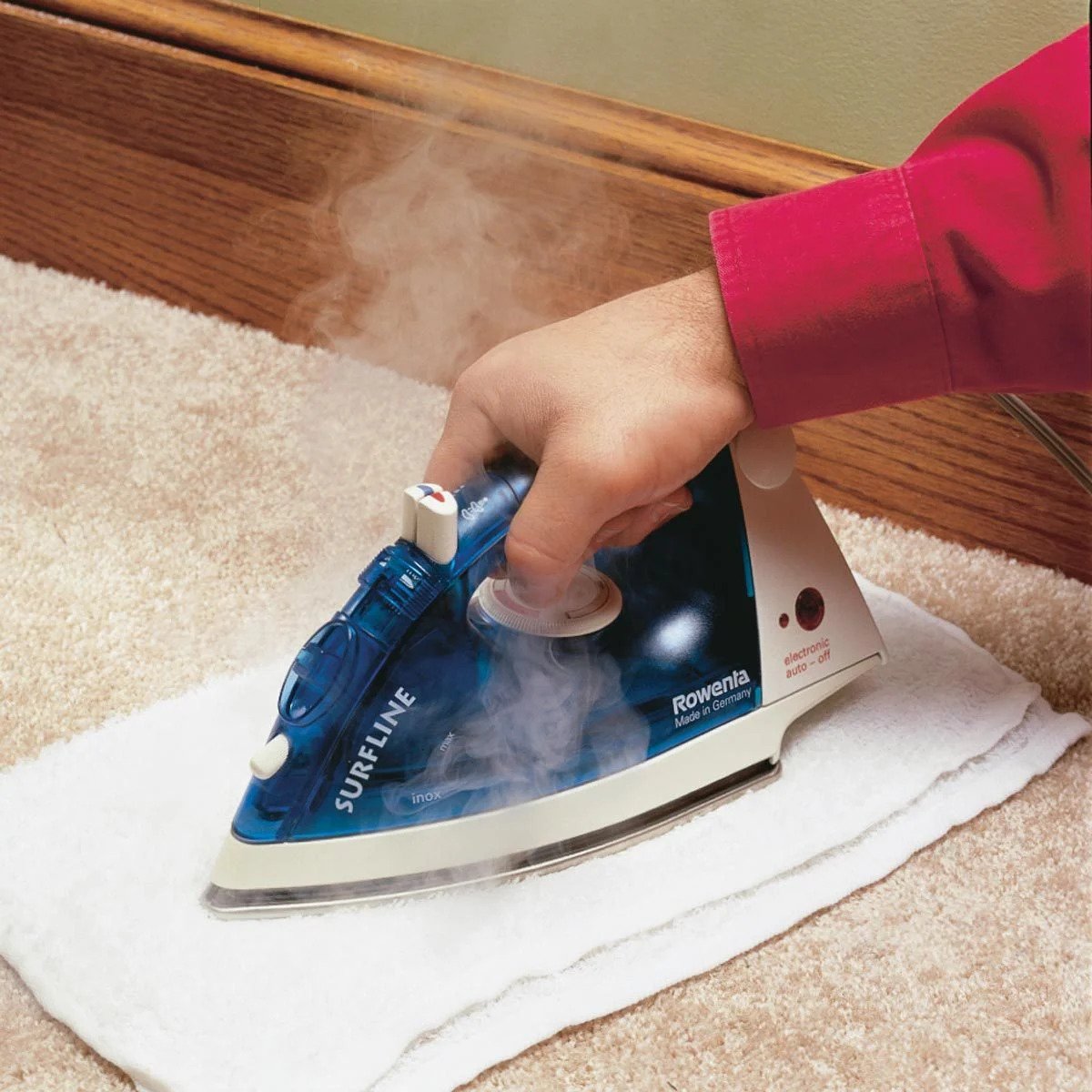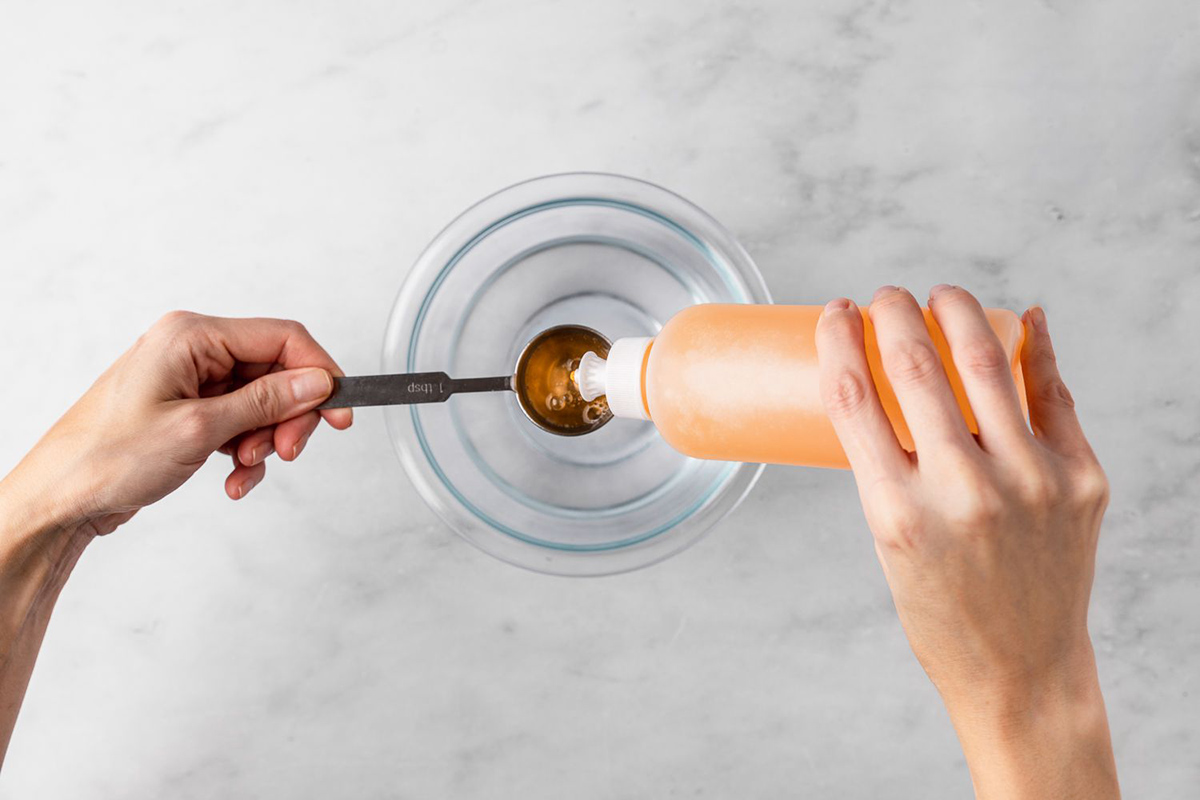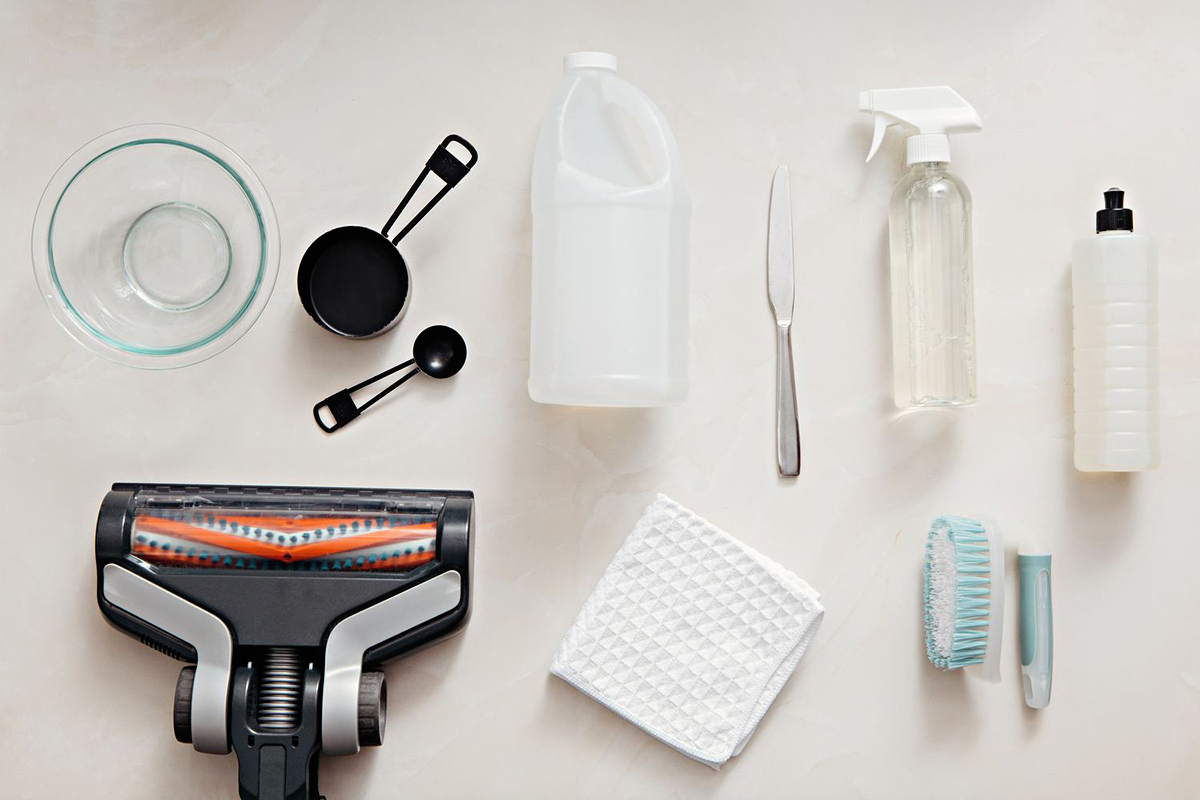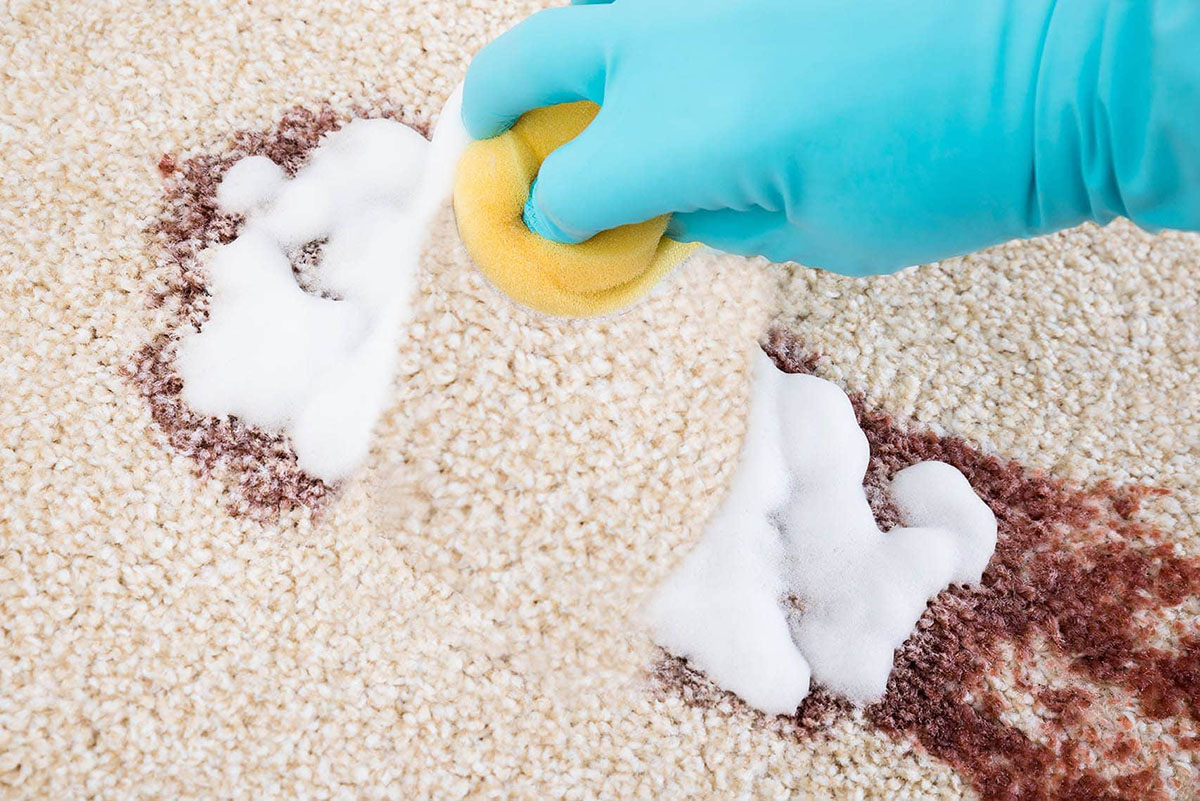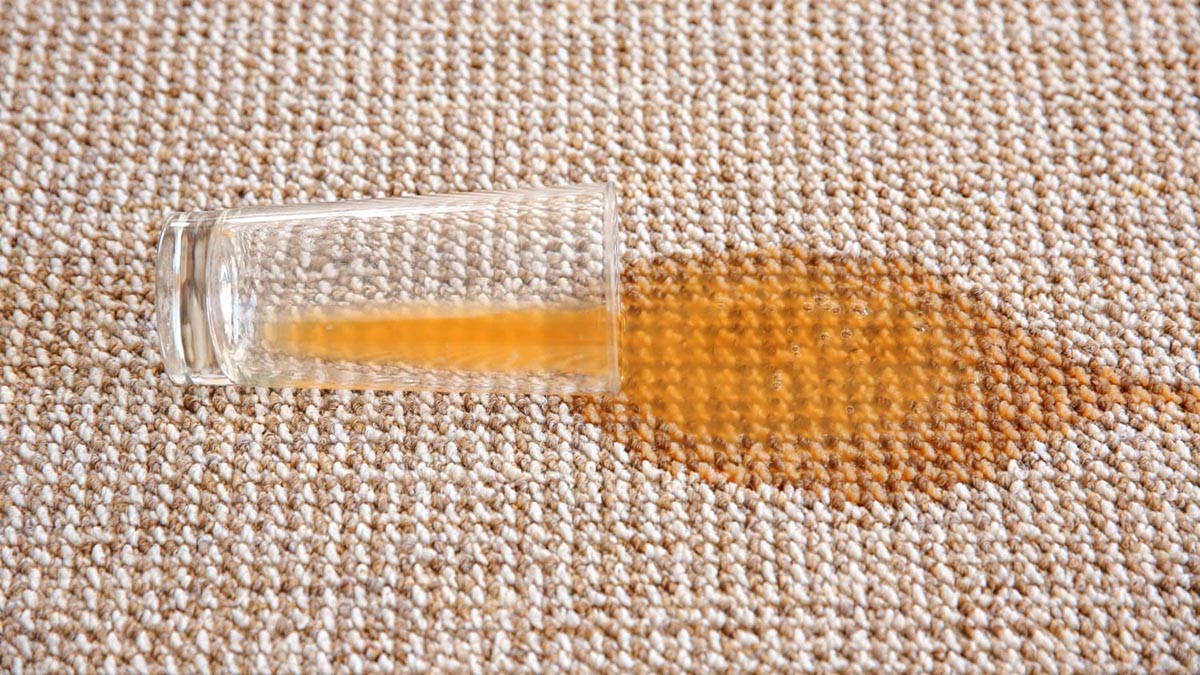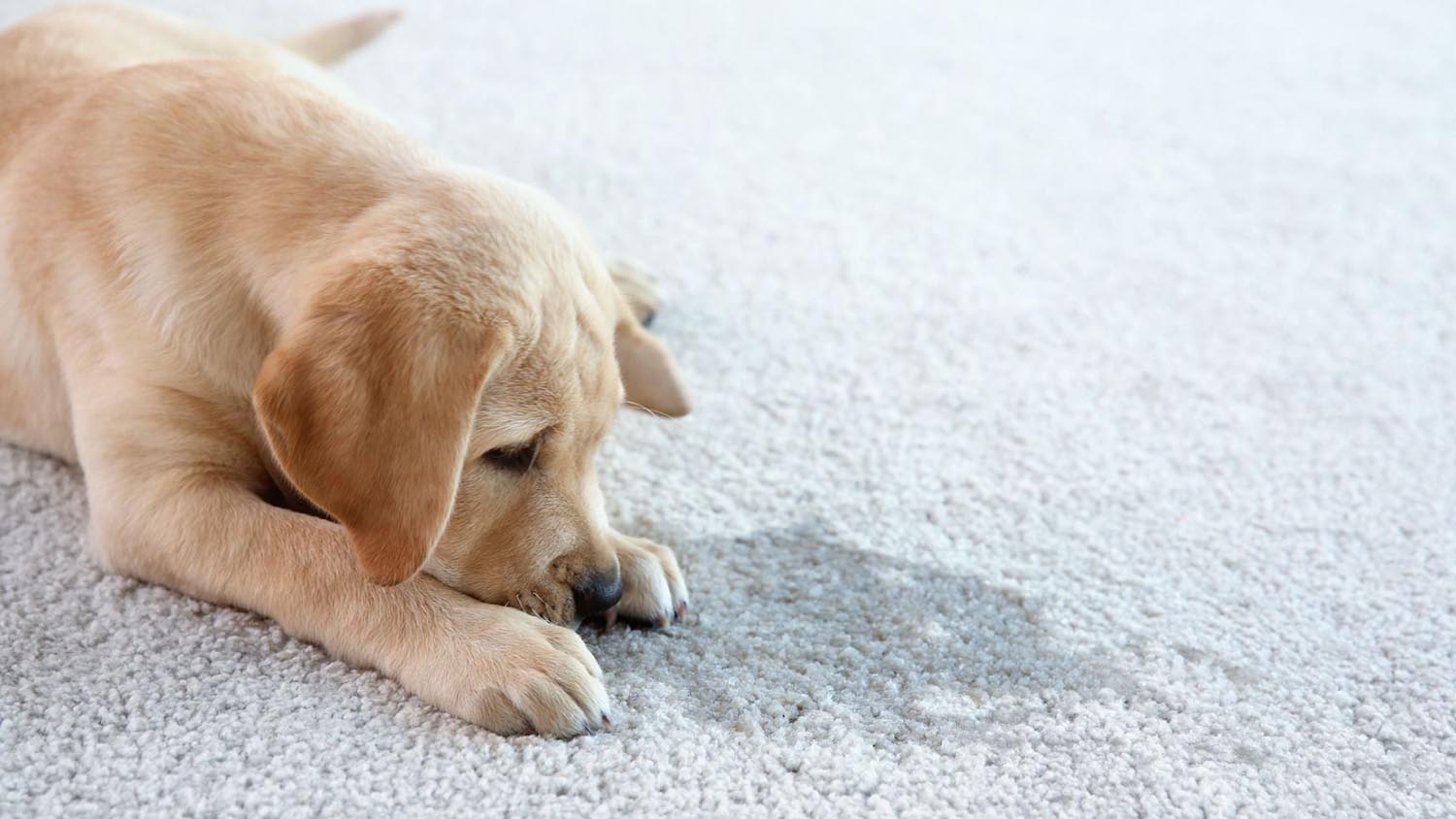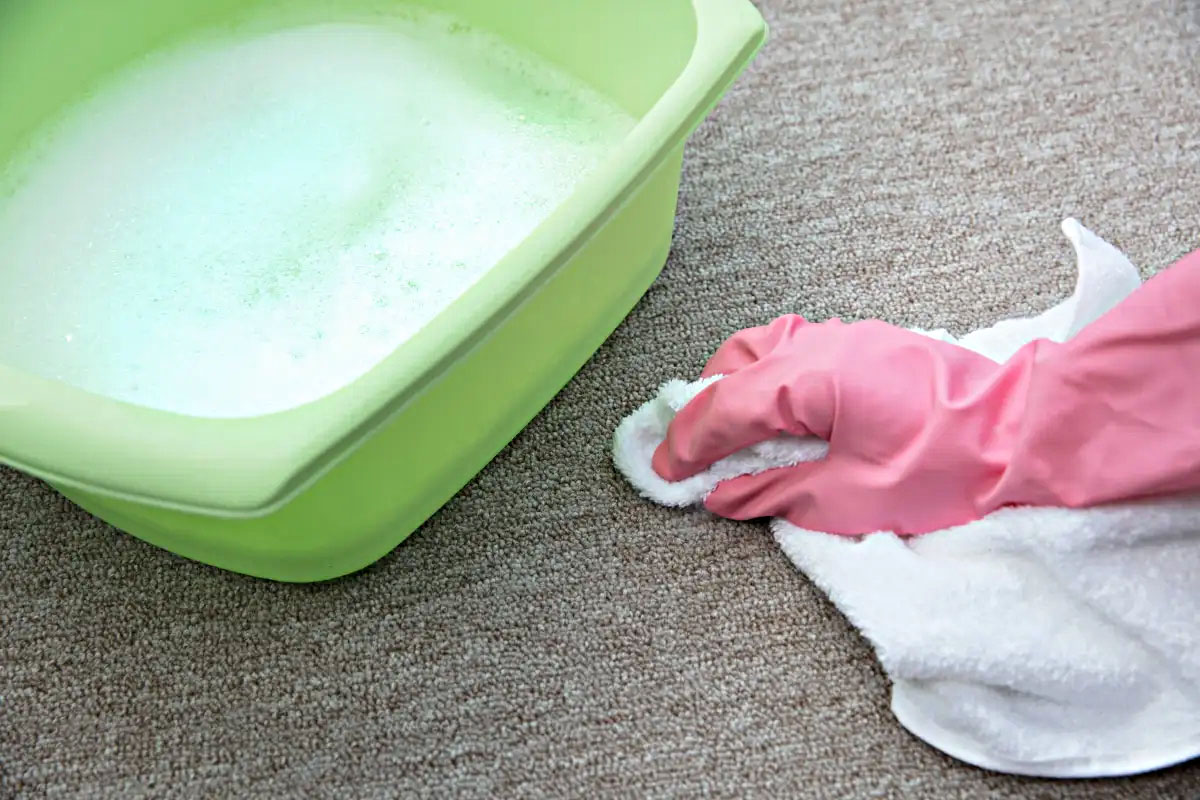

Articles
How To Get Bleach Stains Out Of A Carpet
Modified: September 1, 2024
Learn effective techniques to remove bleach stains from your carpet with our informative articles. Say goodbye to unsightly marks on your flooring and restore its original beauty!
(Many of the links in this article redirect to a specific reviewed product. Your purchase of these products through affiliate links helps to generate commission for Storables.com, at no extra cost. Learn more)
Introduction
Accidents happen, and sometimes those accidents result in unsightly bleach stains on your beautiful carpet. Whether it was a spilled cleaning solution, a mishap during a DIY project, or simply a careless moment, seeing those bleach stains on your carpet can be frustrating and disheartening.
Fortunately, there are several methods you can try to effectively remove bleach stains from your carpet. In this article, we will explore various techniques using common household ingredients and commercial carpet cleaners. By following these methods, you can restore your carpet to its former glory and prevent the need for costly replacements.
It is crucial to act promptly when attempting to remove bleach stains, as the longer the bleach sits on the carpet fibers, the more difficult it becomes to remove the stain. So, without further ado, let’s dive into some effective methods for getting bleach stains out of a carpet.
Key Takeaways:
- Act quickly to remove bleach stains from carpets using household items like vinegar and dish soap, or natural solutions like lemon juice and salt. Test on a hidden area and consult professionals for stubborn stains.
- Use caution and gentle motions when removing bleach stains from carpets. Consider natural remedies like white wine or commercial carpet cleaners, and take preventive measures to avoid future stains. Remember, prompt action is key!
Read more: How To Get A Soda Stain Out Of A Carpet
Method 1: Using Vinegar and Dish Soap
Vinegar and dish soap are common household items that can be surprisingly effective in removing bleach stains from your carpet. The acidity of vinegar helps break down the bleach, while dish soap works to lift the stain.
- Start by blotting the bleach stain with a clean cloth or paper towel to remove any excess moisture. Be careful not to rub the stain, as this can spread it further.
- In a small bowl, mix equal parts white vinegar and water. For example, you can use half a cup of each.
- Dip a clean cloth into the vinegar and water mixture, and gently blot the bleach stain. Avoid scrubbing, as this can damage the carpet fibers.
- After blotting with the vinegar solution, mix a few drops of dish soap with warm water in a separate bowl.
- Dab a clean cloth into the soapy mixture, and gently blot the bleach stain again. This helps to lift the stain and remove any remaining bleach residue.
- Rinse the area with clean water by blotting with a cloth dipped in plain water. This helps remove any soap residue.
- Finally, blot dry with a clean cloth or use a fan to help speed up the drying process.
It is important to note that vinegar should not be used on carpets made of natural fibers, such as wool or silk, as it can damage these delicate materials. Additionally, always test the vinegar and dish soap solution on a small, inconspicuous area of the carpet before applying it to the bleach stain, to ensure that it does not cause any color fading or damage.
If the bleach stain persists or if you are unsure about using vinegar and dish soap on your carpet, it is recommended to consult a professional carpet cleaner for further advice and assistance.
Method 2: Using Hydrogen Peroxide
Hydrogen peroxide is a powerful oxidizing agent that can effectively remove bleach stains from your carpet. However, it is important to use it with caution, as it can cause discoloration on certain types of carpets. Before proceeding with this method, always test the hydrogen peroxide on a small, inconspicuous area of the carpet to ensure it doesn’t cause any damage.
- Blot the bleach stain with a clean cloth or paper towel to remove any excess moisture.
- In a spray bottle, mix equal parts hydrogen peroxide and water. For example, you can use half a cup of each.
- Spray the hydrogen peroxide solution directly onto the bleach stain. Make sure to saturate the stained area without oversaturating it.
- Gently blot the stain with a clean cloth or sponge, applying slight pressure to help lift the bleach stain. Avoid rubbing, as it can damage the carpet fibers.
- Allow the hydrogen peroxide solution to sit on the stain for about 10-15 minutes to break down the bleach.
- After the designated time, blot the stain again with a clean cloth soaked in warm water to remove any remaining residue.
- Dry the area by blotting with a clean cloth or using a fan.
Remember, hydrogen peroxide can lighten or bleach certain types of carpets, especially those made of natural fibers. Therefore, it is crucial to test it on a small, inconspicuous area first and proceed with caution. If in doubt, consult a professional carpet cleaner for guidance.
Additionally, it is important to mention that hydrogen peroxide can be corrosive to certain surfaces, so avoid spraying it on surrounding furniture or materials that may be sensitive to it.
Method 3: Using Ammonia Solution
Ammonia is a strong alkaline solution that can be effective in removing bleach stains from carpets. However, it is important to use caution when working with ammonia, as it can be toxic and emit strong fumes. Make sure to work in a well-ventilated area and avoid mixing ammonia with bleach or any other cleaning products.
- Start by blotting the bleach stain with a clean cloth or paper towel to remove any excess moisture.
- In a bowl, mix one tablespoon of ammonia with one cup of warm water. Mix well to ensure the ammonia is diluted.
- Using a sponge or clean cloth, lightly dampen it with the ammonia solution.
- Gently blot the bleach stain, using small circular motions to lift the stain from the carpet fibers. Avoid scrubbing, as it can damage the carpet.
- Continue blotting the stain until it starts to fade. Repeat the process if necessary.
- Rinse the area with a clean cloth dampened with water to remove any residual ammonia.
- Blot the area dry with a clean cloth or use a fan to speed up the drying process.
It is crucial to note that ammonia should never be used on wool or silk carpets, as it can cause damage. Additionally, always test the ammonia solution on a small, inconspicuous area of the carpet before applying it to the bleach stain to ensure it does not cause any discoloration or damage.
Lastly, remember to handle ammonia with care, follow the safety instructions on the packaging, and keep it out of reach of children and pets.
Method 4: Using White Wine
Believe it or not, white wine can be a surprisingly effective solution for removing bleach stains from carpets. The acidic nature of white wine helps in breaking down the bleach, making it easier to lift the stain. This method works best for fresh bleach stains, so it’s important to act quickly.
- Blot the bleach stain immediately with a clean cloth or paper towel to remove any excess liquid. Be careful not to rub the stain, as this can spread it further.
- Pour a small amount of white wine directly onto the bleach stain. Make sure to saturate the stained area without oversaturating it.
- Using a clean cloth or sponge, gently dab the stain, working from the outer edges inward. This helps to prevent the stain from spreading.
- Continue blotting the stain, applying slight pressure, until you start to see the bleach stain fading.
- Rinse the area with clean water by blotting with a cloth dampened with plain water. This helps remove any remaining white wine and residual bleach.
- Blot the area dry with a clean cloth or use a fan to speed up the drying process.
This method may not completely remove the bleach stain in one go, but it can significantly lighten the stain. Repeat the process if necessary until you achieve the desired results. Remember, it’s important to tackle the bleach stain as soon as possible to increase the chances of successful stain removal.
Note that this method works best for fresh bleach stains and may not be as effective for older or set-in stains. If the stain persists or if you have concerns about using white wine on your carpet, it is recommended to consult a professional carpet cleaner for further advice and assistance.
Read more: How To Get A Blood Stain Out Of A Carpet
Method 5: Using Lemon Juice and Salt
Lemon juice and salt are natural ingredients that can be combined to create a powerful stain-fighting solution for removing bleach stains from carpets. Lemon juice acts as a natural bleaching agent, while the abrasive nature of salt helps in scrubbing away the stain.
- Blot the bleach stain with a clean cloth or paper towel to remove any excess liquid.
- In a small bowl, mix equal parts lemon juice and salt. For example, you can use one tablespoon of each.
- Create a paste by thoroughly mixing the lemon juice and salt.
- Apply the paste directly onto the bleach stain, ensuring all areas of the stain are covered.
- Gently rub the paste into the stain using a clean cloth or sponge. Use circular motions and apply slight pressure.
- Continue scrubbing the stain for a few minutes, allowing the acidic lemon juice and abrasive salt to work together in lifting the bleach stain.
- Rinse the area with clean water by blotting with a cloth dampened with plain water. This helps to remove any residual lemon juice and salt.
- Blot the area dry with a clean cloth or use a fan to speed up the drying process.
This method is suitable for fresh bleach stains and may not be as effective for older or stubborn stains. If the stain persists, you can repeat the process or try alternative methods.
It’s important to keep in mind that lemon juice has natural bleaching properties, and therefore, it’s always a good idea to test the lemon juice and salt paste on a small, inconspicuous area of the carpet before applying it to the bleach stain. This will help you ensure that it does not cause any color fading or damage.
If you have concerns or if the bleach stain is on a delicate or specialty carpet, it is advisable to seek professional assistance to avoid any further damage to the carpet fibers.
Mix 1 tablespoon of liquid dish soap with 2 cups of warm water. Blot the bleach stain with the solution using a clean cloth. Rinse with water and blot dry. If the stain remains, try using a carpet stain remover specifically designed for bleach stains.
Method 6: Using Carpet Stain Remover
If you prefer to use a commercial product specifically designed to remove tough stains from carpets, a carpet stain remover can be an effective option for tackling bleach stains. Carpet stain removers are formulated to break down stains and lift them from the carpet fibers. It is important to follow the instructions provided by the manufacturer for the best results.
- Start by blotting the bleach stain with a clean cloth or paper towel to remove any excess moisture.
- Choose a carpet stain remover that is suitable for bleach stains. Look for products labeled as stain removers or those specifically designed for bleach stains.
- Read and follow the instructions on the carpet stain remover carefully. Shake the can or bottle to ensure the product is well-mixed.
- Spray or apply the carpet stain remover directly onto the bleach stain, making sure to cover the stained area thoroughly.
- Allow the carpet stain remover to sit on the stain for the recommended duration specified on the product’s instructions. This allows the active ingredients to penetrate and break down the bleach stain.
- Gently blot the stain with a clean cloth or sponge to lift the stain. Avoid rubbing or scrubbing, as this can damage the carpet fibers.
- Rinse the area with clean water by blotting with a cloth dampened with plain water. This helps remove any residue from the carpet stain remover.
- Dry the area by blotting with a clean cloth or using a fan to speed up the drying process.
Carpet stain removers can be effective in treating bleach stains, especially if the stain is fresh. However, it is important to keep in mind that not all carpet stain removers are created equal, and some may work better than others for specific stain types. It is always a good idea to test the product on a small, inconspicuous area of the carpet before applying it to the bleach stain to check for any adverse effects.
If the bleach stain is persistent or if you prefer professional assistance, consider contacting a professional carpet cleaner for advice or to have the stain treated by experts.
Method 7: Using Baking Soda Paste
Baking soda is a versatile and readily available household ingredient that can be used to remove bleach stains from carpets. When combined with water, baking soda forms a paste that helps to lift and lighten the stain.
- Begin by blotting the bleach stain with a clean cloth or paper towel to remove any excess liquid.
- In a small bowl, mix baking soda with enough water to create a thick paste. Start with equal parts baking soda and water, adjusting the quantities as needed.
- Apply the baking soda paste directly onto the bleach stain, using a clean cloth or sponge. Make sure to cover the entire stained area.
- Gently rub the baking soda paste into the stain using circular motions. This helps the baking soda to penetrate the carpet fibers and lift the bleach stain.
- Allow the baking soda paste to sit on the stain for at least 15-20 minutes, or longer for deep-set stains. This gives the paste time to work on breaking down the bleach.
- After the designated time, use a damp cloth to blot the stained area, removing the baking soda paste.
- Rinse the area with clean water by blotting with a cloth dampened with plain water. This helps to remove any residue from the baking soda paste.
- Blot the area dry with a clean cloth or use a fan to speed up the drying process.
Baking soda is generally safe to use on most carpets, but it’s always a good idea to test the baking soda paste on a small, inconspicuous area of the carpet before applying it to the bleach stain. This will help ensure that it does not cause any discoloration or damage to the carpet fibers.
If the bleach stain persists or if you have concerns about using baking soda on your carpet, it is advised to consult a professional carpet cleaner for further guidance and assistance.
Method 8: Using Commercial Carpet Cleaners
When it comes to stubborn bleach stains on carpets, commercial carpet cleaners can be a reliable option. These products are specifically formulated to tackle tough stains and provide deep cleaning for carpets. Follow the instructions provided by the manufacturer for the best results.
- Begin by blotting the bleach stain with a clean cloth or paper towel to remove any excess liquid.
- Choose a commercial carpet cleaner that is labeled for use on bleach stains. Look for products that specifically mention bleach stains or tough stain removal.
- Read and follow the instructions on the carpet cleaner carefully. Shake the bottle or canister to ensure the product is well-mixed.
- Apply the carpet cleaner directly onto the bleach stain according to the instructions. Some carpet cleaners may require spraying, while others may need to be applied with a cloth or sponge.
- Gently work the carpet cleaner into the stain using a clean cloth, sponge, or soft brush. Follow any instructions regarding scrubbing or agitation, taking care not to damage the carpet fibers.
- Allow the carpet cleaner to sit on the stain as directed by the product manufacturer. This gives the cleaner time to break down the bleach stain and lift it from the carpet fibers.
- Using a clean cloth or sponge, blot the stain to remove the carpet cleaner and any residual bleach.
- Rinse the area with clean water by blotting with a cloth dampened with plain water. This helps to remove any remaining product from the carpet.
- Blot the area dry with a clean cloth or use a fan to speed up the drying process.
Commercial carpet cleaners are designed to be powerful and effective, but it’s important to choose a cleaner appropriate for your carpet type and follow the manufacturer’s instructions for safe and optimal use. If you have concerns or are unsure about using commercial carpet cleaners on your carpet, it’s always a good idea to consult a professional carpet cleaner for guidance.
Remember to always test the carpet cleaner on a small, inconspicuous area of the carpet before applying it to the bleach stain. This helps to ensure that it does not cause any discoloration or damage to the carpet fibers.
Professional carpet cleaners also have access to more specialized and advanced cleaning techniques, so seeking their services can be beneficial for difficult bleach stain removal or for delicate and valuable carpets.
Read more: How To Get Ash Stains Out Of A Carpet
Tips for Removing Bleach Stains
When it comes to removing bleach stains from carpets, it’s important to proceed with caution to avoid further damage. Here are some helpful tips to keep in mind throughout the stain removal process:
- Act quickly: The sooner you address the bleach stain, the better chance you have of successfully removing it. Prompt action helps prevent the bleach from fully penetrating the carpet fibers.
- Blot, don’t rub: When dealing with a fresh bleach stain, blot the area gently with a clean cloth or paper towels to absorb as much liquid as possible. Rubbing can spread the stain and damage the carpet fibers.
- Test on a hidden area: Before applying any cleaning solution or method to the bleach stain, test it on a small, inconspicuous area of the carpet. This allows you to check for any adverse reactions or color fading.
- Use gentle motions: Whenever you’re blotting, dabbing, or scrubbing the bleach stain, use gentle motions to avoid further damaging the carpet fibers.
- Avoid heat: Heat can set a bleach stain, making it more difficult to remove. Avoid using hot water or high-temperature settings when treating the stain.
- Read instructions: If using commercial carpet cleaners or stain removers, carefully read and follow the instructions provided by the manufacturer for safe and effective use.
- Consult professionals: If the bleach stain is stubborn or if you’re uncertain about using certain cleaning methods or products, it’s best to consult a professional carpet cleaner for expert advice and assistance.
- Protective measures: To prevent future bleach stains, consider using protective measures such as placing rugs or mats in high-risk areas or handling bleach-containing products with care.
Remember, removing bleach stains from carpets can be challenging, especially for older or deeply set stains. It’s always prudent to seek professional help if you’re unsure or if the stain persists despite your best efforts.
By following these tips and being mindful of the carpet type and the cleaning agents used, you can increase the chances of successfully removing bleach stains and restoring the appearance of your carpet.
Conclusion
Removing bleach stains from carpets can be a daunting task, but with the right techniques and a little perseverance, you can restore the beauty of your carpet. Act promptly, using the appropriate methods and cleaning agents to increase your chances of success.
From using natural ingredients like vinegar, lemon juice, and baking soda to commercial carpet cleaners, there are several methods available to tackle bleach stains. Each method has its own advantages and considerations, so it’s important to choose the one that suits your carpet type and the severity of the stain.
Remember to always test any cleaning solution or method on a small, inconspicuous area of the carpet before applying it to the bleach stain, ensuring it doesn’t damage or discolor the fibers. Additionally, use gentle motions during the stain removal process to avoid further damaging the carpet.
If you’re unsure about the best approach or if the bleach stain persists despite your efforts, it’s wise to consult a professional carpet cleaner for expert guidance and assistance. They have the knowledge, experience, and specialized equipment to handle stubborn stains and delicate carpets.
Prevention is key to avoid future bleach stains. Take precautions by using protective measures such as mats or rugs in high-risk areas and handling bleach-containing products with care.
Remember, accidents happen, but with the right techniques and a proactive mindset, you can successfully remove bleach stains from your carpet and restore its appearance.
So don’t let bleach stains discourage you. Arm yourself with the knowledge and the right tools, and tackle those stains with confidence. Your clean and stain-free carpet awaits!
Frequently Asked Questions about How To Get Bleach Stains Out Of A Carpet
Was this page helpful?
At Storables.com, we guarantee accurate and reliable information. Our content, validated by Expert Board Contributors, is crafted following stringent Editorial Policies. We're committed to providing you with well-researched, expert-backed insights for all your informational needs.
